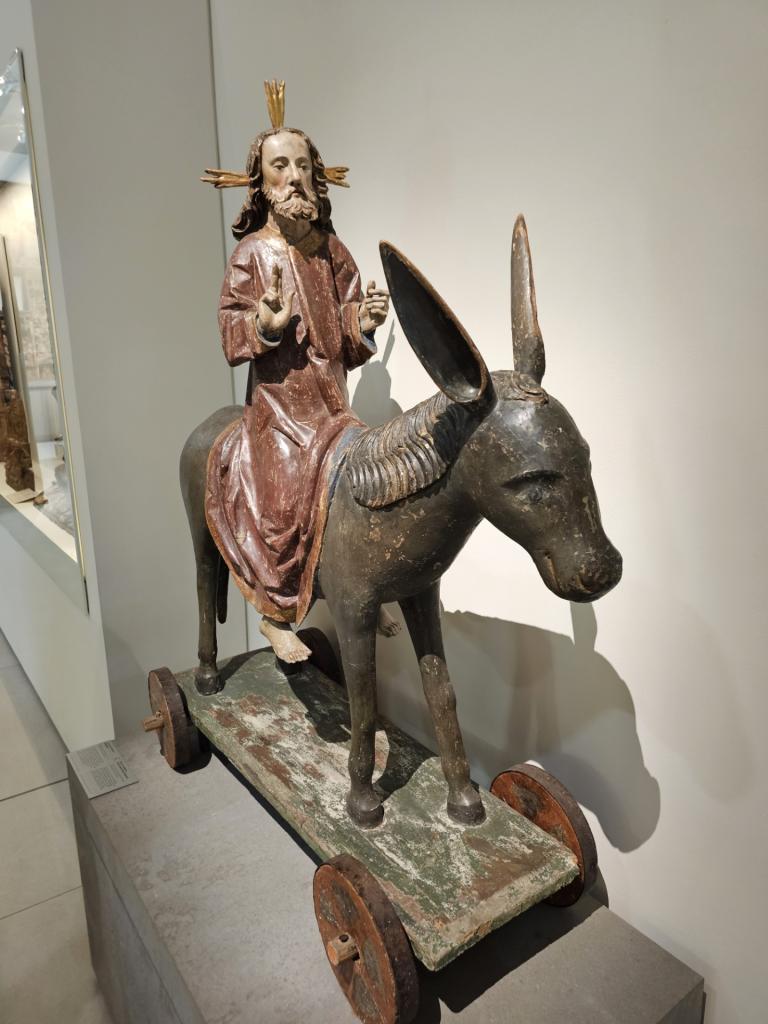Bowman Jr., Robert M. and J. Ed Komoszewski. The Incarnate Christ and His Critics: A Biblical Defense. Grand Rapids, Mich.: Kregel Ministry, 2024. 853 pp. Hb. $57.99 Link to Kregel Academic
Bowman and Komoszewski have previously collaborated on Putting Jesus in His Place (Kregel, 2007). That volume was substantial, yet it is less than half the size of The Incarnate Christ and his Critics. The reason for this expanded book on traditional Christology is a rapid decline in the belief that Jesus is God in both America and the U.K. In their introduction, Bowman and Komoszewski point to Ligonier Ministries surveys as evidence that evangelicals do not understand what the Bible claims about Jesus. For example, while large majorities would affirm the idea of the Trinity, a surprisingly high number would also agree Jesus is the first and greatest of God’s creations.
They use the acronym HANDS as an outline for Christology: Jesus receives honors that are due God; he shares attributes of God; he shares the names of God; he does the deeds that only God does; he is on the seat of God’s eternal throne. Bowman and Komoszewski argue that Jesus claimed these things, and the early church recognized them in their worship of Jesus as God. This stands in contrast to the common academic claim that the historical Jesus never claimed to be God. A significant difference between this and the earlier volume is that Bowman and Komoszewski answer objections to the divinity of Jesus from seven theological schools of thought. This book is, therefore, a significant contribution to apologetics as much as to systematic theology.
In the first introductory chapter, Bowman and Komoszewski List and define the seven critics with which they interact in this book: mysticism, Muslims, progressive Christianity, Unitarians, Jehovah’s Witnesses, Mormons, and one Pentecostal. The second introduction chapter describes the traditional Christology they defend the book. Although many people think “Jesus is God” is a simple enough definition of what the Bible teaches, this is not enough since Mormons and Jehovah’s Witnesses would agree. A more precise definition is “the unique, eternal son, guide in nature and status, humbled himself to become a man, Jesus Christ, in order to die on the cross to rise from the dead for the redemption of human beings” (63).
The second introductory chapter defines how Bowman and Komoszewski understand the deity of Christ. They describe this as “traditional Christianity” (63), “biblical monotheism” (67), and “historic Christian faith” (77). Someone defending a traditional doctrine of Christ cannot say “Jesus is God” since Mormons and Jehovah’s Witnesses would both agree with this. Therefore, Bowman and Komoszewski define what they mean by deity, divine, and God. God is the only proper object of worship, uncreated and eternal, revealed as Yahweh to Israel, the creator who rules over all things. They use these five points as they develop their acronym HANDS. As for defining what they mean when they say deity of Jesus: Jesus is the unique, eternal Son, truly God in nature and status,” yet he is also fully human who died and rose from the dead. The resurrection demonstrates that Jesus was more than a prophet or good teacher. But Jesus is the Son, not the Father: this is a trinitarian view of Christ.
Part one (six chapters) demonstrates that Jesus receives honors due to God. God is the only proper objective worship, yet the gospels describe people worshiping Jesus. In Hebrews 1:6, God himself commands the angels to worship Jesus. Paul says that all creation will worship Jesus Phil 2:10–11. Likewise, Revelation describes all of creation as worshiping Jesus. Bowman and Komoszewski conclude that Jesus is a proper subject for worship. They observe that early Christian worship used the word Maranatha (Rev 22:20–21) and used the name of Jesus in benedictions, doxologies, hymns, and rights, such as baptism and the Lord’s Supper. In addition, prayers are to be offered only to God, yet early Christians prayed to Jesus as God.
In part two (eight chapters), Bowman and Komoszewski show that Jesus shares attributes of God. Rather than a list of attributes of God from systematic theology, Bowman and Komoszewski define what they mean by God in contrast to their critics. They begin with the pre-existence of Christ, including a full chapter on John’s gospel. They answer the critique that Jesus is the first created being (Jehovah’s Witnesses) with significant sections on Colossians: 15 and Revelation 3:14. The section also deals with the sinlessness of Christ, divine knowledge during the incarnation, and the paradox of Jesus is both divine and human. Bowman and Komoszewski argue for a traditional view of the hypostatic union.
Part three (eleven chapters) surveys the names of God Jesus shares. Bowman and Komoszewski begin with the name Jesus and what it means to be “in the name of Jesus.” They observe that people are saved in the name of Jesus, baptized in the name of Jesus, etc. Jesus is called the son of God, although he is not a literal son (contra the critics). Nor is one of the gods, or an angel, such as an archangel or equivalent to Michael. This section includes several chapters focusing on the gospel of John since John describes God as the father and Jesus as the son. Bowman and Komoszewski offer a detailed chapter on translating the phrase “the word was God” John 1:1 which is critically important for Jehovah’s Witnesses and Mormons. They discuss the translation of the word begotten, or unique son of God, and Thomas’s declaration that Jesus is “my Lord in my God” (John 20:28).
Chapters 25–27 deal specifically with the Lord as a divine name. Does “Lord” in the New Testament imply the same thing as Yahweh in the Old Testament? For example. When Peter fails to walk on the water in Matthew 14:30, he says, “Lord, save me.” Is he calling out to Jesus or Yahweh? Based on illusions from Matthew 14 to Psalm 68, Bowman and Komoszewski conclude that Peter calls out to Jesus as Yahweh. They provided a chart collecting all the verses in which Paul calls Jesus Lord (501). Finally, they discussed the “I am” sayings in the gospel of John. When Jesus begins a phrase with “I am,” does he imply equality with the Old Testament God? For example, John 8:58 key passage. After examining this passage closely, Bowman and Komoszewski conclude that John 8:58 makes the same point as Exodus 3:14 or Isaiah 43:10. Jesus claims to be “the eternal one.” So yes, in John 8:58, Jesus claims to be divine.
In part four (seven chapters), they examine the deeds of Jesus in the Gospels and show that Jesus does the things that only God does. In this section, Bowman and Komoszewski discuss a series of stories in the gospels where Jesus does something that implies that he is divine. For example, Jesus claims to forgive sin (Mark 2:1-12 and parallels). There are several stories where Jesus heals an illness by forgiving their sins. They include two chapters on Jesus as a miracle worker. Miracles are not necessarily proof of divinity since others claim to do miracles, yet they were not God. Bowman and Komoszewski deal with skeptics of miracles in general and critics who claim that the leader church creates the miracles to imply that Jesus is God. Of critical importance for the argument of this book are Jesus’s nature miracles. In these kinds of miracles, Jesus demonstrates that he is the creator. Likewise, by raising people from the dead, Jesus shows that he is the giver of life. In both cases, Bowman and Komoszewski illustrate these points with illusions of the Old Testament, which described God as the creator and giver of life. The final chapter in this section argues that Jesus claimed to be the eschatological judge (see for example, Tucker Ferda, Jesus and His Promised Second Coming). If Jesus claimed that he would return to judge the nations, is this a claim of divinity? The problem is that the Second Temple literature did not consider the Messiah equal to God. The critical text is Daniel 7:14, the son of man receives authority from the Ancient of Days, who appears to be a separate divine person. This chapter provides an excellent transition to the next part of the book.
Finally, in part five (four chapters), Bowman and Komoszewski demonstrate that Jesus is presently on the seat of God’s eternal throne. Jesus is the Lamb of God seated on God’s throne. This section begins with a survey of the trials of Jesus. How could Jesus be executed for blasphemy if he did not claim some form of quality with God? Part of this claim is that he will be seated on the right hand of God. Bowman and Komoszewski discuss what it means to be seated on the right hand of God, with copious Old Testament and Second Temple Jewish texts to illustrate Jesus as a divine Son of Man seated on God’s throne. Bowman and Komoszewski also misunderstand of what “seated at the right hand” means among their critics, especially Mormonism in this case.
In conclusion to the volume, Bowman and Komoszewski review their acronym as “criteria of deity” and make a cumulative argument in favor of the traditional doctrine of Christ. The traditional doctrine of Christ’s divinity is not a biblical construct, citing several New Testament passages (Matt 28:16-20; John 1:1-18; Heb 1:1-13; Phil 2:6-11). Some critics may object that Jesus himself never claimed to be God, and at least three of these four passages come from as late as 40 years after Jesus. Bowman and Komoszewski make a biblical argument that assumes the accuracy of the gospels. Historical Jesus scholars would dismiss the gospel of John as a late theological text rather than an accurate record of what Jesus said and did. In addition, mythicists would dismiss all the evidence because it comes from the Bible.
Conclusion. With thirty-eight chapters and a conclusion, this looks to me like 40 Questions on Christology that got out of hand. Bowman and Komoszewski provide a detailed biblical argument for traditional Christology. Although the book could be considered a contribution to systematic theology, the book goes beyond what appears typically in systematic theologies. They include exegesis of critical texts and a canonical approach supplemented by an awareness of Jewish literature of the Second Temple period. Going further, Bowman and Komoszewski seriously engage with non-traditional views of Christ’s deity (“the cults) and other religious views. There is less response to mythicists critics than I expected, given their growing popularity in American culture.
NB: Thanks to Kregel for kindly providing me with a review copy of this book. This did not influence my thoughts regarding the work.

 1 month ago
17
1 month ago
17










 English (US) ·
English (US) ·